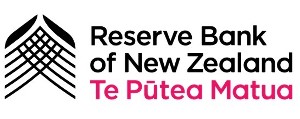

The insurance regulation team at the RBNZ have done little to enhance the reputation of the bank over the past two years.
The drama started in 2021 when the RBNZ decided to issue a new solvency standard for insurance companies, replacing the previous standards for life and general insurance respectively.
Some changes were required because the accounting standard for insurance reporting, IFRS 4, was being replaced with a new Standard, IFRS 17, from 1 January 2023. The RBNZ decided that at the same time it would combine the existing Life and Solvency standards into a single Standard.
Because the two industries are so different, producing a single merged Standard actually creates significant technical difficulties. However, the first exposure draft of the proposed new Standard was so full of errors (including many drafting errors) it clearly had not been subject to a thorough review prior to being published.
Eventually the new standard was released in October 2022, taking effect from financial years commencing on 1 January 2023 and later.
A first amendment was subsequently implemented, which provided for some minor changes.
However much more significant errors have emerged in the new Standard.
The most obvious one to comment on relates to asset risk charges. A fixed interest bond investment is subject to two risks:
(a) The failure of the issuer
(b) The fact that market interest rates could change, leading to a change in the market value of the bond.
These two risks were explicitly allowed for in the previous Standards, and have been included in the latest Standard. The risk of failure (the credit risk) is provided for via charges that vary depending on the credit rating of the issuer.
The risk of market rates of interest changing is provided for via an allowance for the movement that would result from a 1.75% movement in market interest rates (this risk charge also depends on the extent of any interest-sensitive insurance liabilities).
Unfortunately, in the new Standard, the RBNZ decided to place the interest risk charge provisions in a section (the Market Risk section) that included risk charges on equities and properties. In clause 96, it then said that any assets that had a market risk charge, didn’t need to have a credit risk charge.
The industry almost universally ignored clause 96 as an obvious error, including bond credit risk charges in their solvency calculations. The RBNZ reporting template also requires that these charges are included.
The RBNZ “template” is an Excel workbook that sets out the prescribed information that insurers are required to submit to the RBNZ. The new Standard required a new template, and this was a separate saga all on its own.
With the first companies due to report their solvency position under the new Standard at 1 January 2023, the first versions of the annual and quarterly templates were only made available in May 2023, although companies were given a period of grace to file their first returns.
The previous reporting templates were quite detailed but also quite manageable. The updated templates have increased the volume of required reporting approximately three-fold (the multiple depends on whom you speak to). Moreover, even the smallest companies now have to file their accounting and solvency information every quarter.
Previously, quarterly reporting was only required for the larger insurers, medium-sized insurers had a lighter burden, and small insurers (those writing less than $1.5 million per year) and captives had an even lighter burden.
The exact benefit of this substantially increased reporting burden on insurers, who have already been struggling to comply with a significant new accounting standard, is unclear.
The first version of the annual and quarterly reporting templates had a number of basic errors. A year later and another three versions later, there are still errors in the templates, so a version 5 will no doubt follow in due course.
Back to clause 96: the RBNZ has now decided, in its wisdom, that although Clause 96 is obviously a mistake, the Standard is the Standard, and accordingly insurers should not be holding a credit risk charge on their fixed interest investments.
All solvency returns submitted to date, that have included these charges, are “wrong”. Insurers have been instructed to report back on the extent of this “error” by the end of April.
Although you would have thought that the error in Clause 96 is a quick fix that could be done in five minutes, the RBNZ has stated that this error won’t be fixed until the end of 2024. In the meantime, insurers are required to state their solvency position with no credit risk charges allowed for on their bonds, which could be significantly over-stating the solvency position that is clearly the intention of the Standard.
Having previously gone on record to express concerns that New Zealand insurers had relatively low levels of capital backing them, it is a surprise that the RBNZ is, in effect, endorsing a stuff-up of their own making that will artificially inflate the industry’s solvency margins for at least the rest of 2024.
You can’t make this stuff up.
| « [Opinion] Will RBNZ demand proof from Resolution on support for Asteron Life customers? | It'll be different this time; Asteron boss on Resolution deal » |
Special Offers
No comments yet
Sign In to add your comment

© Copyright 1997-2025 Tarawera Publishing Ltd. All Rights Reserved